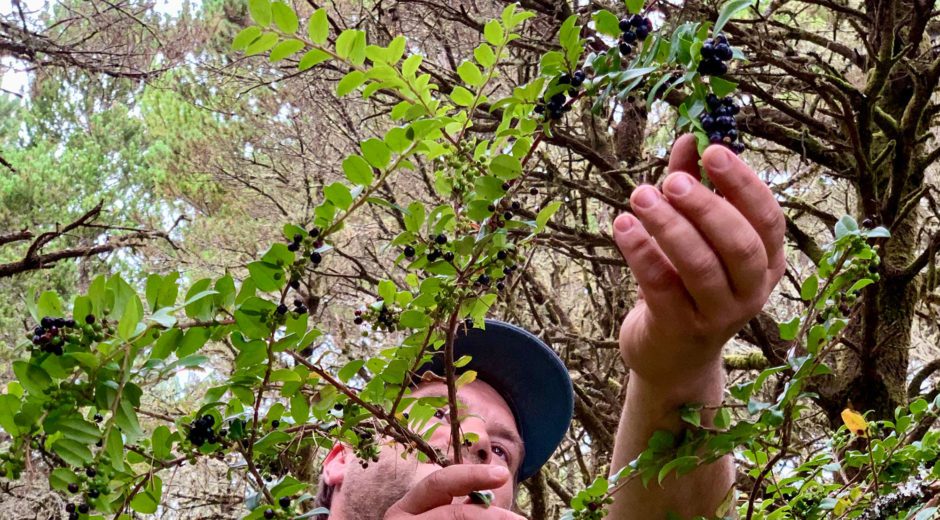Who can resist a homemade blackberry pie or huckleberry pancakes made with hand-picked berries? An Oregon Coast tradition, picking wild berries can be summer fun for the whole family. Wooded areas alongside the North Coast ocean beaches are overflowing with tiny black coastal and red huckleberries; the elongated, grainy, deep purple salal berries; tart Oregon grape that’s great for jelly; delicate red thimbleberries; and slightly bitter salmonberries, which come in the colors of the sunset. These fruits are all important wild food for local indigenous peoples.
Undoubtedly, the most popular berry to pick is the blackberry, which grows prolifically all over the North Coast along roads, railroad tracks, and fence rows, and around the edges of parks, parking lots, and any other disturbed areas. Look for the thorny thickets of the invasive Himalayan blackberry anywhere there’s ample sun from August to October. The smaller — some say tastier — Oregon native trailing blackberry ripens in July, and the evergreen or cutleaf variety ripens in the waning days of summer.
Berries are freshest in the morning, so you’ll want to start early. You’ll find fewer bugs early in the day and at the start of the season. Wearing a hat, long sleeves, and long pants will protect your limbs from scratches, and wearing jingle bells or singing as you pick in coastal forests will alert any bears of your presence. They enjoy berries, too!
As with any foraging adventure, check the rules and limits that may apply to the area in which you are foraging. If you’re planning to forage for huckleberries in a large park or forest, check in with a ranger to ask about the best picking spots. Be aware when you’re picking blackberries that some rural roadsides are sprayed with herbicides. And share the harvest and aim for sustainability — only pick a small amount from each plant and no more than 10 percent of a patch.

